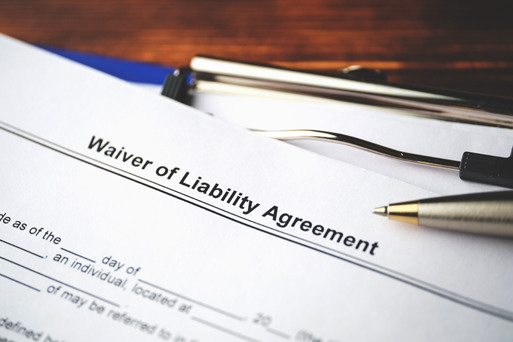Issue 163 – September 2025
LEGAL MATTERS

Whitehead v. City of Oakland: Important Risk Transfer Lessons for Public Agencies
In May 2025, the California Supreme Court ruled in Whitehead v. City of Oakland that liability waivers cannot protect public agencies from claims involving violations of statutory safety duties. The case involved a cyclist who was seriously injured after striking a pothole during a permitted bicycle training ride. Although the participant signed a waiver releasing the City of Oakland from liability, the court allowed the claim to proceed, holding that the city retained a non-delegable duty to maintain its roads in a non-dangerous condition.
Thankfully, this ruling does not create new legal obligations or expand public agency liability. Agencies’ existing statutory duties remain unchanged. However, the key takeaway is clear: participant waivers alone cannot be relied on to protect public agencies in the event of injuries arising from alleged dangerous conditions of public property. While waivers are still useful tools, they won’t shield public agencies from claims when the agency fails to maintain facilities as required by law.
What This Means for Public Agency Risk Management Strategy
The Whitehead decision reinforces the need for a layered risk transfer approach when permitting special events. While participant waivers remain an important component, enhanced protection comes from executing well-written contracts with strong indemnification provisions, adequate insurance requirements, clear inspection procedures, and good documentation.
When permitting a special event, Members should require event organizers to conduct thorough inspections of venues and routes at least 30 days before the event and again within 72 hours of the event date. Organizers should be required to report any hazards to the public agency in writing, with enough time to address problems. Why this matters: Establishing a clear inspection and reporting timeline transfers the hazard identification obligation to the event organizer and provides an opportunity for the public agency to remediate hazards in advance of the event.
Event agreements and special event permits should make organizers responsible for participant safety and require them to defend and indemnify the public agency for event-related claims. The same insurance requirements that apply to the primary organizer should also apply to all vendors and subcontractors. Why this matters: Indemnification and insurance requirements transfer risk to the party organizing the event rather than leaving the agency exposed.
Insurance requirements should match the event’s risk level. All events need general liability coverage. Depending on the event characteristics, additional types of insurance may be necessary, such as liquor liability coverage for events where alcohol is sold, auto liability coverage for events involving vehicles, sexual abuse and molestation coverage for events with minors, and workers’ compensation coverage when employees are present. Why this matters: Requiring adequate insurance coverage ensures there is money available to pay claims if something goes wrong, protecting both the public agency and the event organizer.
Participant waivers should continue to be used but must be event-specific, include clear and legally enforceable language, be reviewed by staff before the event, and be retained for at least three years. Why this matters: While waivers cannot prevent liability from the alleged violation of statutory safety duties, they remain an important defense against many other causes of action.
Documentation is a critical component of the special event permitting process. Maintain detailed records in every event file, including staff review of inspection reports, insurance certificates and endorsements, copies of participant waivers, and all communications with organizers. Why this matters: A complete and well-documented file demonstrates diligence and proactive risk management, which can be essential in defending against claims.
Public agencies are encouraged to consult legal counsel to ensure special event requirements are codified by ordinance or adopted by governing body resolution. Why this matters: Formally adopting special event requirements provides legal authority for enforcement and strengthens the agency’s position if permit terms are later challenged.
Moving Forward
While the Whitehead decision does not fundamentally alter public agency liability exposure, it does highlight the risks of relying too heavily on participant waivers without implementing comprehensive risk transfer mechanisms. Members are encouraged to review existing special event permit requirements, update contract language to include indemnification clauses, establish minimum insurance requirements for different event types, create clear inspection and reporting procedures for organizers, and train staff on proper documentation practices.
By taking these steps, members can continue hosting public events safely and responsibly while reducing exposure to claims. The goal is not to eliminate all risk—it is to ensure that risk is properly allocated to the parties best positioned to manage it.
A Special Event Permit template and Special Event Guidelines will be shared during the U Can’t Touch This: How to Avoid Special Event Liability session at this year’s Risk Management Educational Forum. Following the Forum, the resource will be posted to the California JPIA’s online resource library. The California JPIA’s Contractual Risk Transfer Manual with sample indemnification language and insurance requirements can also be accessed through the online resource library.
For questions or additional information, please contact your regional risk manager.
< Back to Full Issue Print Article
